Today’s appointment takes us to the prefecture Mie, about 100km east of Kyoto. Mie has a tea cultivation tradition of more than 800 years. The first tea seeds that were put into the soil here came from Kyoto, after arriving to Japan from China.
Today we meet Iwao Hayashi and his son Kimihiko. This year, Kimihiko picks us up from the train station with the car. On the way, we already ask him how far his tea bushes have progressed, and tell him about other tea gardens where the tea bushes have started to sprout rather late or not at all yet, even in warmer regions further south. Kimihiko Hayashi tells us that his tea bushes are sprouting around seven to ten days later than in recent years‘ average too. So, it is also a late year for Mie. About the time of harvest in Mie, 2016 was an average year, with harvest beginning on 5th May.
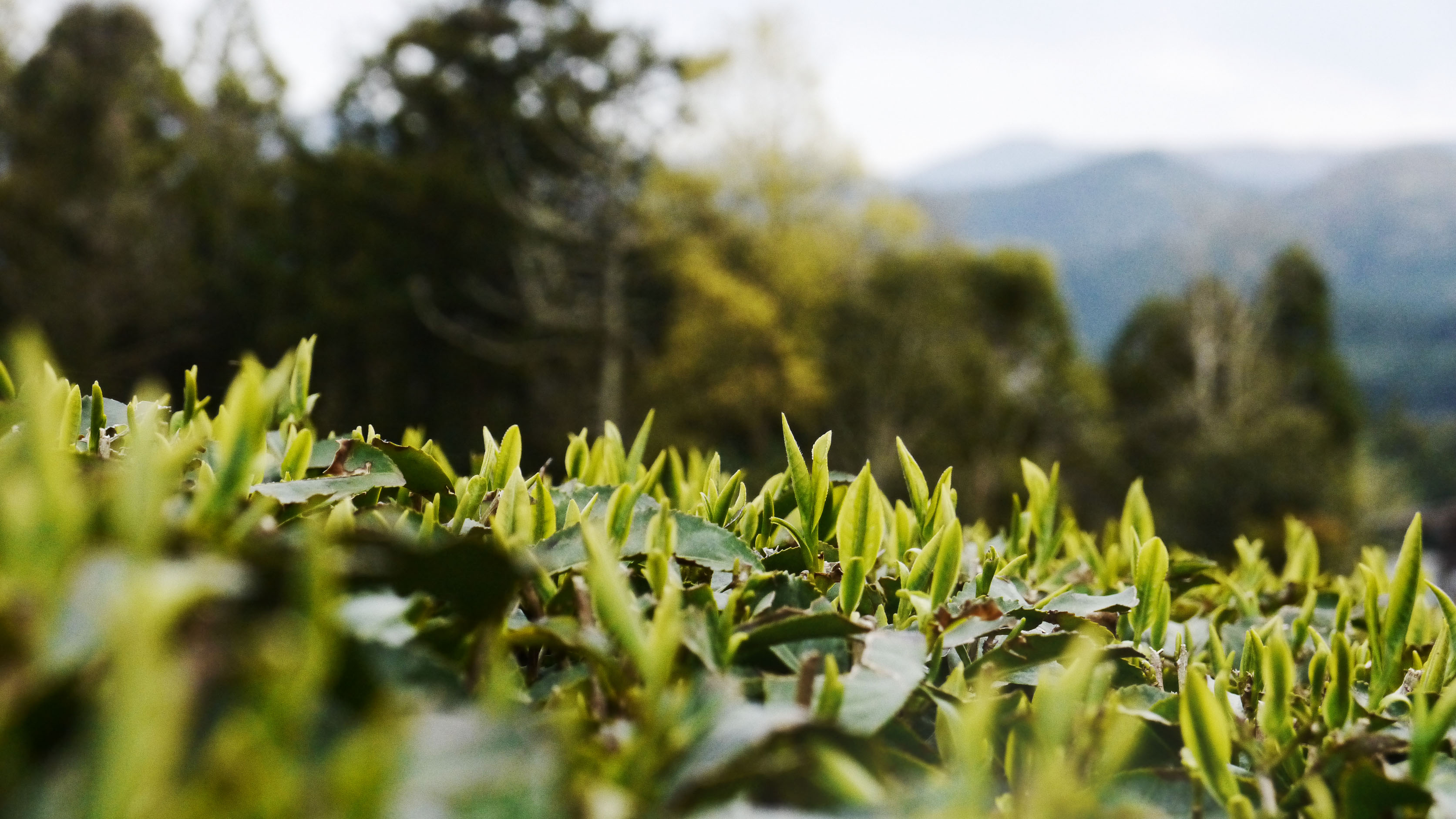
For 2017, the harvest date cannot be foreseen yet. However, Kimihiko expects a date around 10th May, and his father Iwao an even later first harvest day, depending on how the weather develops in the next weeks.
More about Shincha in our Shincha Blog 2017.
After we asked for the young sprouts, Kimihiko offers us to visit an experimental tea garden, surrounded by a greenhouse, which is located in the neighbourhood. In this cultivation project, tea is cultivated under mostly controlled conditions. By controlling several cultivation factors, the effectiveness of various fertilisers can be compared directly, without side effects of different locations, soil conditions or rainfall. This reminds Tobias a lot of his times as a student at the Department of Plant Breeding. Nevertheless, this cultivation project here is, of course, not an organic tea garden, as the operation of a greenhouse and its high energy use are not compatible with the idea of an organic way of cultivating tea. Here we can see sprouts that are clearly larger – ready for harvest next week.
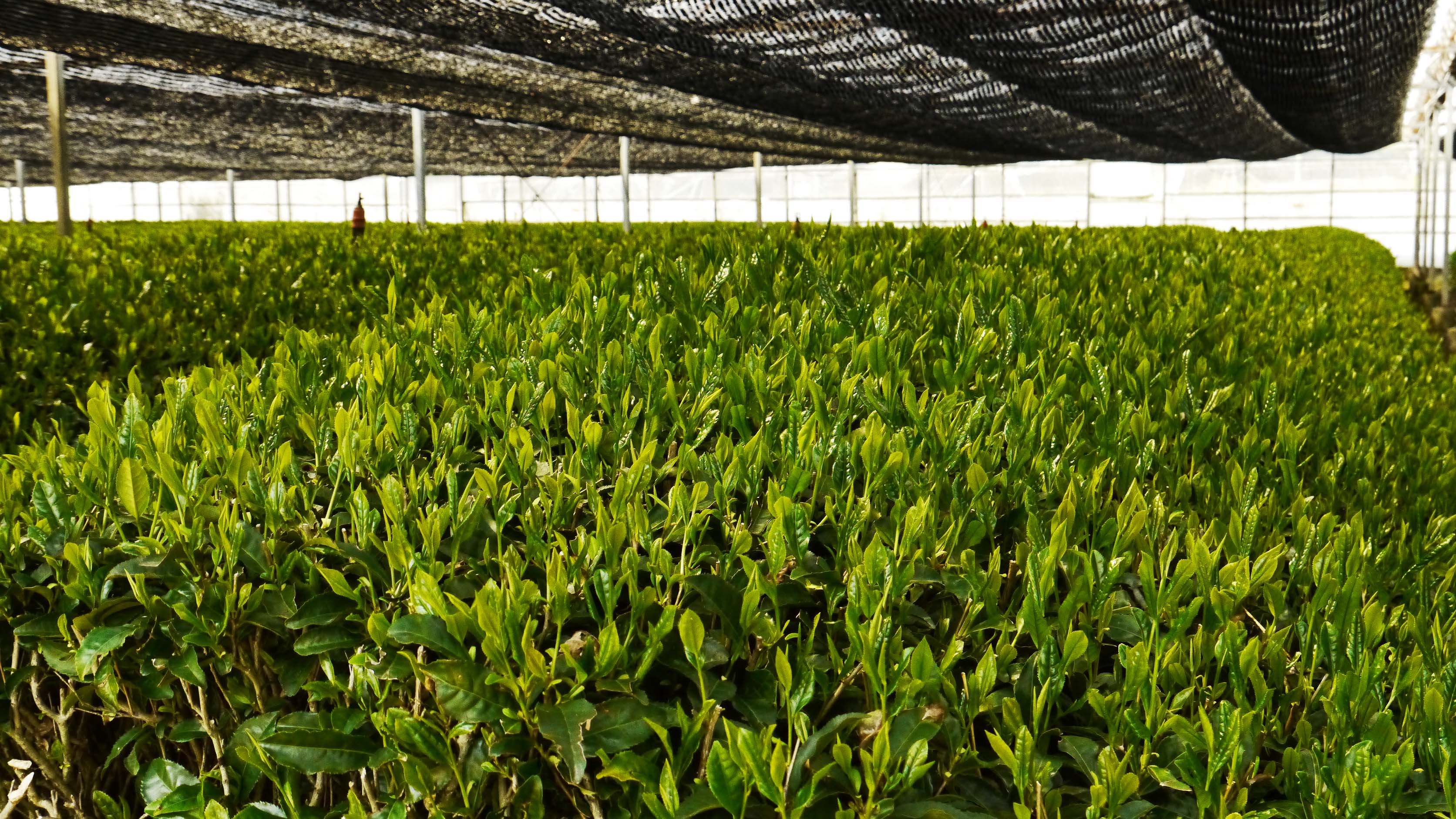
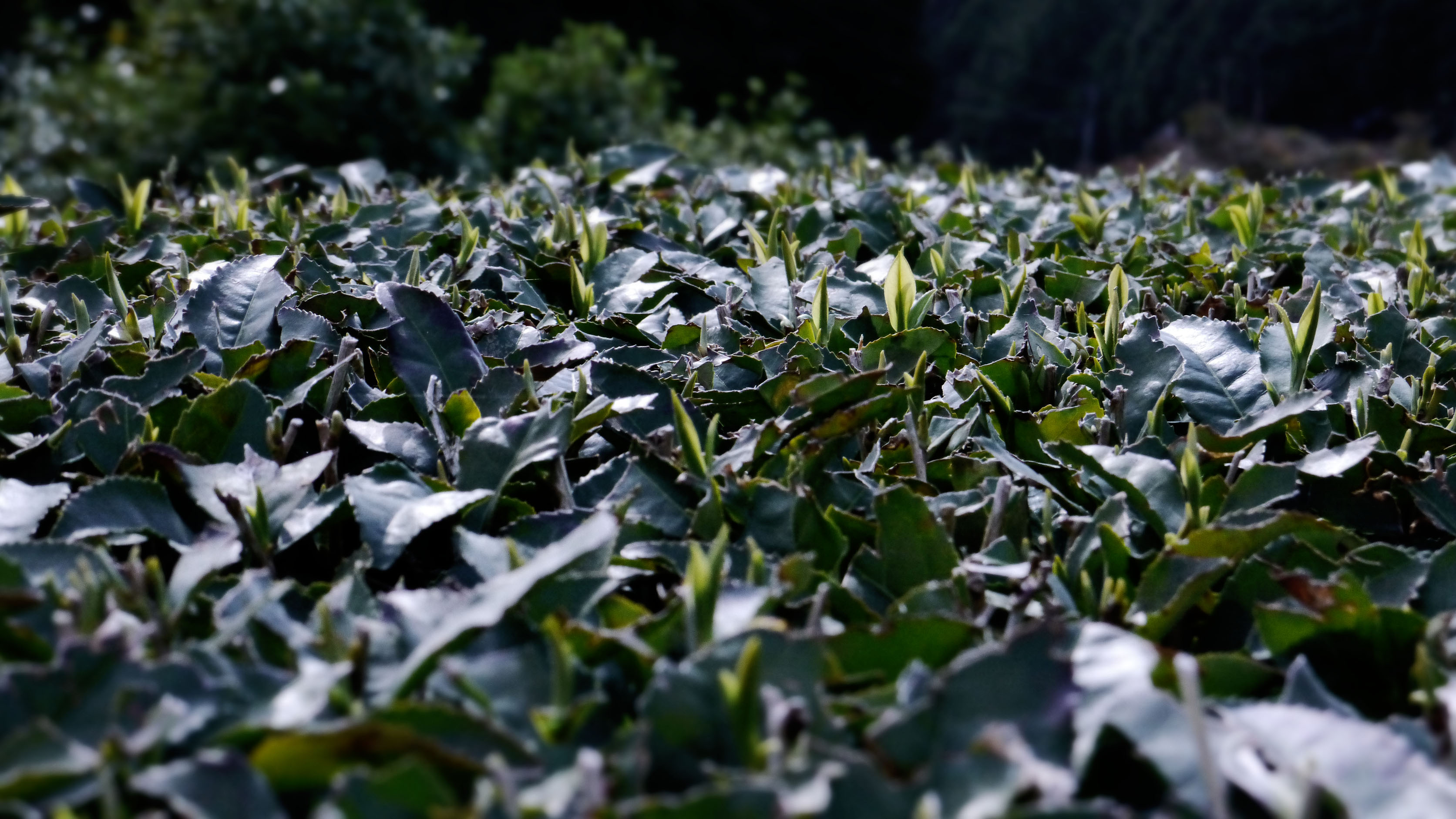
Young sprouts in the same cultivation project outdoors (Yabukita) for comparison
However, in the region Mie, this early and fast growth is only possible with greenhouse cultivation. Inside, temperatures are around 28°C to 30°C. And at night, sometimes the greenhouse is heated, so that the young sprouts are not destroyed by night frost.
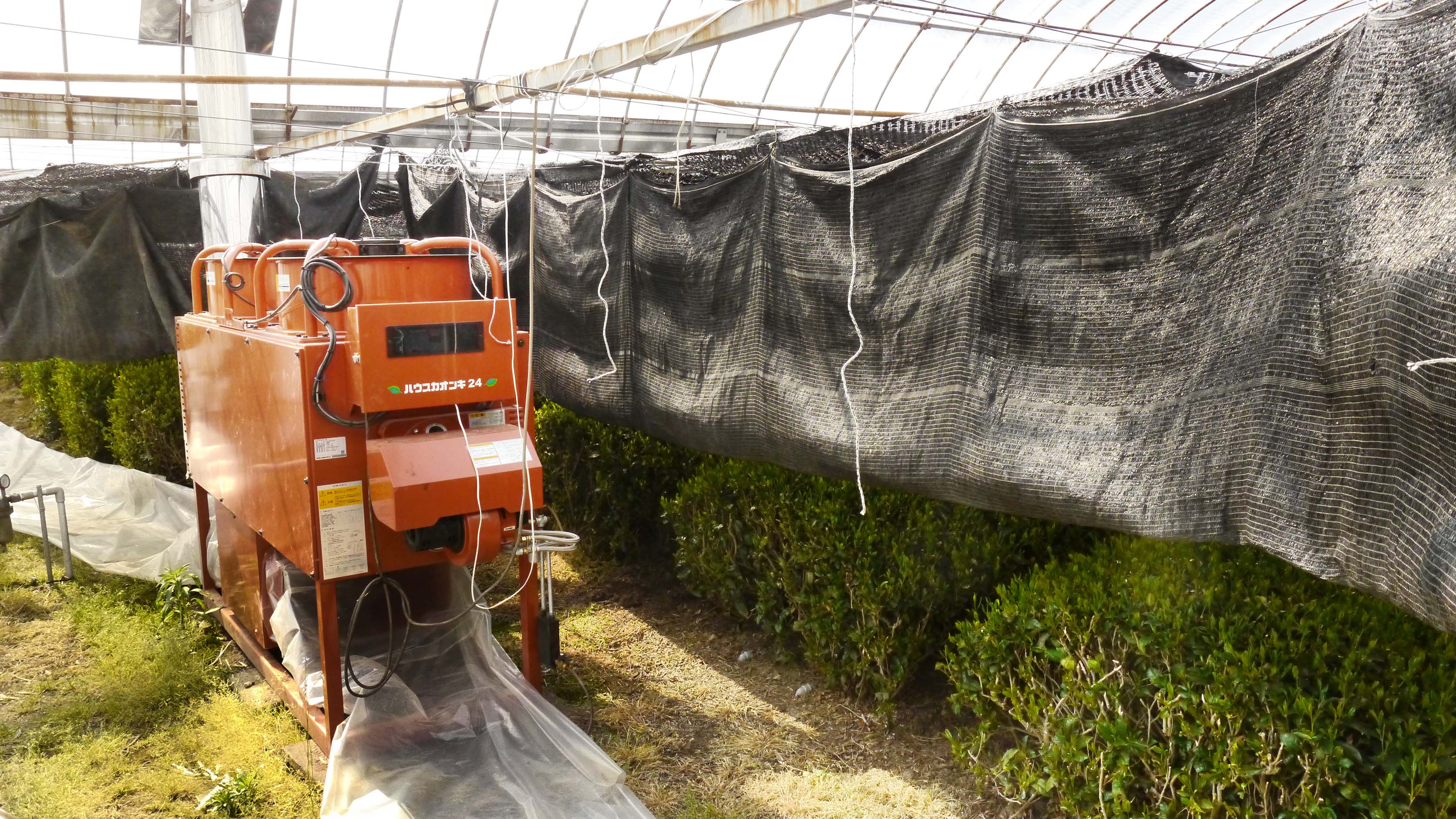
To controll for the factor water availability, artificial watering is necessary. For this field of about a quarter hectare size, 3000 litres of water are needed per day. This amount seems quite a lot, but compared to natural rainfall it is not much. Therefore the tea from this greenhouse tastes less intense. To gain a beautiful colour, here the bushes are shaded for about one week. However, it seems to be not so bad that the tea is not extraordinarily intense in taste: in the end, it is not for drinking, but will be offered to the gods in Ise Shrine, one of the most important Japanese national shrines. Being the very first Shincha from this region makes it special, and thereby worthy to be offered. Unfortunately it is no organic tea, but then again the Japanese gods are not going to drink it.
Arriving at the house of the Hayashi family, we now also meet Iwao Hayashi and his wife. 80-year-old Iwao’s health condition is not perfect at the moment, but he is still joking a lot. At the moment he has difficulties walking, every step feels uncomfortable. But recently it is getting better again, so he expects to be in good shape again for harvest time. He also says that he is already 80 years old and, indeed, quite energetic for his age. Asking about his wife’s condition, he answers jokingly: very good, but then she is still young – six years younger than him. To us, both of them appear very lively and cheerful.
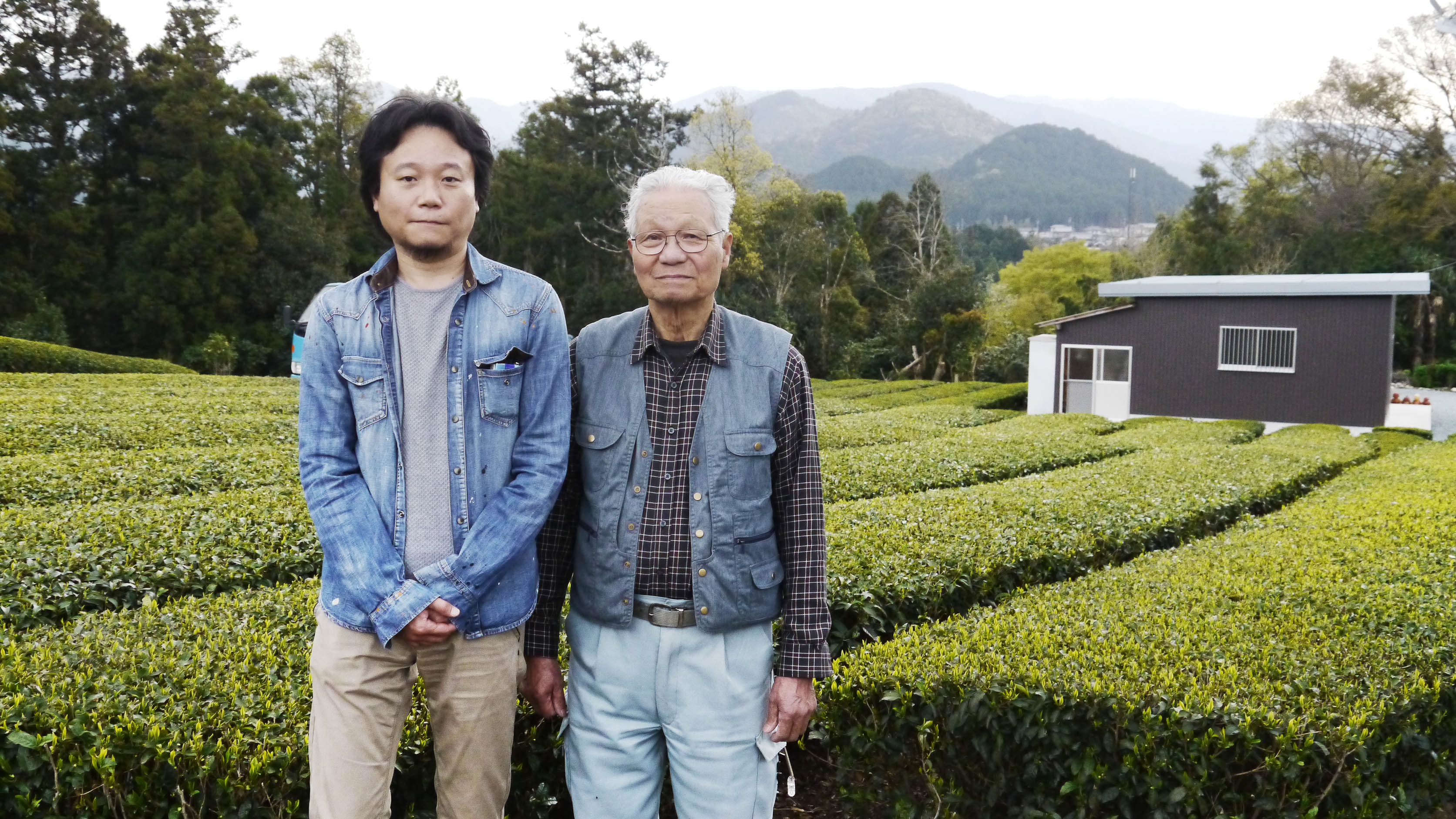
Last year we met Iwaos grandson Shuhei, who works in the family garden for two years now. During our last visit, he was busy with the tea harvest. His proud grandfather tells us that his grandson is doing a very good job. We also hear that 23-years-old Shuhei married last year and has a daughter now. Of course, great-grandfather Iwao Hayashi is very proud of this too.
Iwao tells us that it has been raining a lot since February. He adds that lot of rainfall in February and March is very good for the tea of the first harvest. During this time, the plants are gathering energy for the new sprouts – the Shincha LINK and Tokujou Sencha. Therefore he expects a good tea year 2017. It is still going to take a while before the new teas can be harvested, and until we can taste the first samples, but we are already looking forward a lot.